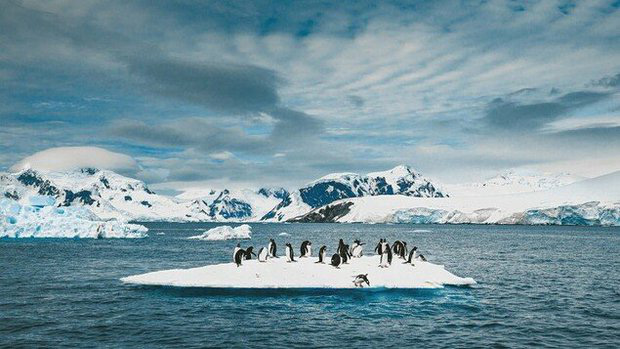Doomsday glacier in Antarctica melts fast, climate change warning threatens catastrophic sea level rise
The Doomsday Glacier in Antarctica is melting at its fastest rate in 5,500 years, raising fears of catastrophic sea level rise and the survival of future ice shelves.
The finding comes from a study of prehistoric sediments found on the shores around Doomsday, in the West Antarctic Ice Shelf. The chilling news is that the thaw driven by climate change is happening at the fastest rate in recorded history.
Dylan Rood, an Earth scientist at Imperial College London, said the indications suggest that the western ice shelves have broken off in the most important plates, threatening to create catastrophic sea level rise in a world. The world is warming up. He is also questioning that it is too late to stop the process.
As one of the fastest melting glaciers in Antarctica, Thwaites is nicknamed "Doomsday Glacier" (Doomsday means "doomsday"). Since the 1980s, the Thwaites have lost about 595 billion tons of ice, contributing to a 4% rise in global sea levels.

Polar creatures are the first victims of this catastrophic result.
Thwaites and its northern neighbor, the Pine Island Glacier, covers large areas; They have a surface area of about 192,000 square kilometers (roughly the size of the UK) and 162,300 square kilometers respectively.
Because the sea-facing head of the glaciers is located in an ocean basin with warm ocean currents flowing through, this further accelerates melting and possibly detaching from the giant ice shelf.
In addition, this underlying melting weakens glaciers and leaves them vulnerable to surface fracturing, which can extend to entire ice shelves. If the entire West Antarctic Ice Sheet were to break and melt into the sea, it would raise global sea levels by about 3.4 meters, enough to submerge many important cities and lands.
The researchers report that from 55 centuries ago to before 30 years ago, ice loss exposed coastlines at a rate of about 3.5mm per year. But in the past 3 decades, the rate of sea level rise has skyrocketed - up to 40mm per year - that is more than 11 times.
The scientific community is continuing to research whether this condition can be reversed. Meanwhile, the world is experiencing a "nightmare" summer and a record drought.
- Sea level will rise by 20m if the Earth's ice melts
- The world's most dangerous glacier is about to melt, catastrophic with Earth?
- Sea level rise threatens more than 180 cities in the United States
- Greenland Glacier shattered, a clear sign of climate change
- The Antarctic glacier melted easily to raise the sea level by 3.4 meters
- The lands were submerged when the whole ice melted
- Antarctic ice will melt quickly in the next decades
- Countries in the world only have a very fragile chance to save the Earth
- Bangkok is sinking slowly ... into the sea
- Global sea level is increasing
- Climate change, sea level rise and these are the most suffering cities in the world
- Sea level rises record in 2013
 Is the magnetic North Pole shift dangerous to humanity?
Is the magnetic North Pole shift dangerous to humanity? Washington legalizes the recycling of human bodies into fertilizer
Washington legalizes the recycling of human bodies into fertilizer Lightning stone - the mysterious guest
Lightning stone - the mysterious guest Stunned by the mysterious sunset, strange appearance
Stunned by the mysterious sunset, strange appearance